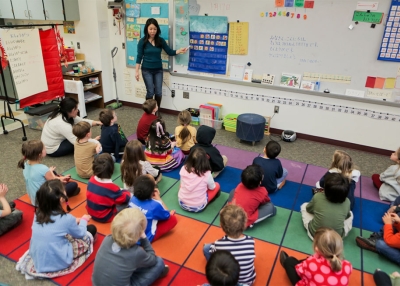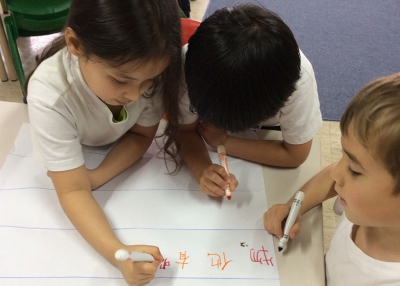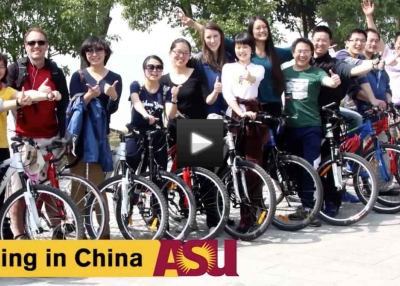A Focus on Fun Spurs Language Learning

Cathy Zhang saw the line between work and play dissolve when she happened upon two groups of five-year-old students absorbed in writing a story in Chinese during their free time. This was not an accident; rather it was the result of the educational philosophy of the Chinese International School (CIS) in Hong Kong. Zhang, who serves as head of Chinese learning at CIS Primary, explains that when students are engaged in higher-level learning, language is only a by-product, and a lifelong love of learning is the main achievement.
Wendy Ngai, year-one (kindergarten) teacher, explains that her day-to-day teaching is guided by the principle of pleasure. Speaking in Chinese she says, “My goal is that students think studying Chinese is play, that it makes them happy.”
To make learning enjoyable, Ngai leverages her young students’ energetic and social natures. Many writing activities are done in groups. Young students argue passionately over word choice and the correct formation of characters. Ngai assists them with prompts or directs them to classroom resources so they may find answers themselves. Memorization is less important to Ngai, because she believes that when students wrangle over language, they are learning from one another. When they seek out a solution, they are learning independently. In both cases the results in terms of language acquisition are lasting.
For most of her students, Ngai’s class is their first introduction to Chinese. Every day she leads them in games. Initially, parents are skeptical of the emphasis on fun, admits Ngai, but they soon appreciate the results. This is because the games and play are crafted to be active, meaningful, and varied.
Speaking and reading skills are developed through shared, small group, and independent activities. Reading workshops integrate language study (including vocabulary, grammar, and characters) and give students blueprints to follow, as well as opportunities to practice and apply emerging skills.
Writing is a favorite daily activity. Ngai provides support so students can concentrate on expressing their ideas. She encourages them to write characters, which they also practice in study books, but allows them to use pictures, such as a “♥” for 喜欢 (“to like”), Pinyin, or simply leave blank spaces. The focus on ideas empowers and motivates students, while helping the teacher identify and address weaknesses.
Providing students with age-appropriate models helps them structure their stories. Ngai especially likes pattern activities where students follow the structure of a favorite storybook but write about a different topic. In the end, they are proud to have written a story of their own.
Finally, Ngai counsels, let children use language that is meaningful to them. “Show and Tell” is a perfect opportunity for students to pursue their interests and share their knowledge. The result is that the students love Chinese, are motivated, and build a strong base for advanced learning in the higher grades.
Cathy Zhang, who co-teachers year-five (fourth grade) Chinese applies the same principles for her older learners. Every week her class spends time on independent reading, using books selected for each student’s level. Students use mentor texts to generate ideas, and then draft outlines following teacher-provided models to organize main ideas and supporting points. When students gather for group writing on an assigned topic, Zhang distributes vocabulary lists and grammar patterns to provide differentiated learning and instant feedback as students apply the language in new contexts. Throughout, Zhang knows her priorities. “Writing is not about the end result. It is about how to use tools for language acquisition. It motivates the kids to learn the language.”
Teachers meet some challenges with this approach. Finding engaging resources for each level can be time consuming, and CIS has started to publish these resources on its website. Nevertheless, the effort is worthwhile, not only for students, but also for teachers, who claim they too enjoy this approach. “Once you teach it,” Zhang pledges, “you won’t go back.”
It’s a simple, but important lesson: when language is fun, students are excited to reach for higher goals. “When they learn Chinese,” explains Zhang, “it is about thinking, love of learning, the whole person, and how to make a difference in the world.”
Learn More
Chinese International School Hong Kong Dual Language Learning










